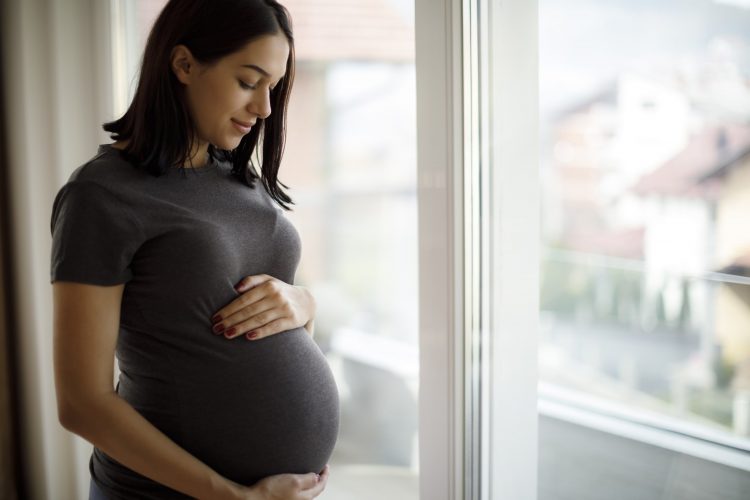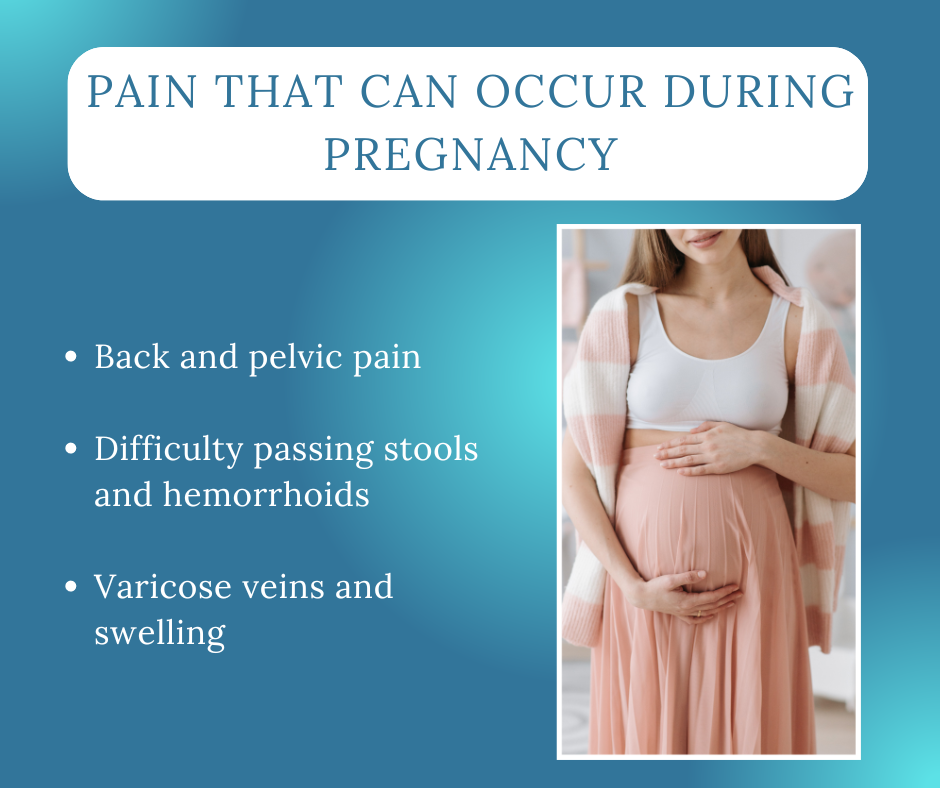
Is pregnancy pain a necessary evil?

The time surrounding pregnancy is generally accompanied by many joys and beautiful moments. Unfortunately, for some women, painful conditions can occur that seriously affect their quality of life, preventing them from enjoying this happy time. Of course, when we become pregnant, we normally expect to feel some pain, but we’re often surprised by the amount of pain we experience during pregnancy. Fortunately, there are often simple solutions available to restore our comfort.
Here are some common types of pain that can occur during pregnancy and some solutions to help you if you are suffering from them:
Back and pelvic pain
Approximately 60% of women suffer from low back or pelvic pain (or both), with or without sciatic nerve damage, during pregnancy. Typically, these pains start at the beginning of the 2nd trimester. Having had pain before pregnancy or during previous pregnancies, as well as weight gain, are contributing factors. It is important to note that of this percentage, 9% have acute symptoms and 24.7% of women will continue to suffer from these pains after pregnancy. It is therefore imperative to intervene promptly, during pregnancy, to avoid prolonging this situation. Fortunately, there are effective interventions that can permanently solve the problem.
Lower back and pelvic pain may be caused by the significant postural changes experienced during pregnancy: increased ligament laxity, increased curvature of the lower back and a rapid increase in abdominal weight resulting in a shift in the body’s center of gravity. Other causes, such as a decrease in neuromuscular control, may also contribute to the problem.
There are a number of interventions available to relieve this pain. However, there is currently no scientific consensus. Exercise (in or out of the pool) along with physiotherapy, osteopathy and acupuncture seem to be effective options. You can try the following exercises:
https://naitreetgrandir.com/blogue/2014/09/17/grossesse-3-exercices-pour-diminuer-les-douleurs/
At home, local heat application and massage can also help relieve symptoms. A pelvic-perineal physiotherapist can also help you find the right exercises for your condition, especially if your pain is very severe or if you have suffered from back pain in the past. In addition to helping you with lower back and pelvic pain, the pelvic-perineal physiotherapist will assess your overall perineal function to prevent and treat incontinence issues and prepare your pelvis for childbirth.
Difficulty passing stools and hemorrhoids
While it is a less glamorous topic if ever there was one, difficulty in passing stools is unfortunately a common complication of pregnancy. Due to hormonal changes and possibly morphology, intestinal transit slows down, resulting in less frequent stools that are more difficult to pass. Repeated pressure on the pelvic floor, due to the daily effort to expel stools, combined with changes in the circulatory system and congestion in the pelvis can lead to another rather unpleasant complication: hemorrhoids. To avoid all this, you should adopt a diet rich in fiber and make sure you are well-hydrated. Regular physical activity and diaphragmatic breathing can help. In addition, putting your feet on a small bench to reproduce the squatting position when going to the toilet facilitates the expulsion of stools by following the natural physiognomy of this activity.
This rather funny video explains how the position of your body influences expulsion: https://www.youtube.com/watch?v=YbYWhdLO43Q
If problems persist despite these tips, a pelvic-perineal physiotherapist can help you identify the mechanisms that are causing the difficulty in passing stools and help you find a solution.
Varicose veins and swelling
It is interesting to know that during the 1st trimester, the mother’s blood volume increases by 40% and remains so until delivery. That’s a lot of fluid to manage! Adding the effect of gravity when standing causes an increase in venous pressure in the lower limbs and pelvis, leading to varicose veins and edema (commonly called swelling), which can cause pain in the legs and even in the vulva. This swelling in the extremities can also lead to compression of certain peripheral nerves, causing discomfort, such as carpal tunnel syndrome. Cardiovascular activity, wearing compression garments (support stockings), applying cold compresses and changing position (decreasing standing position, elevating the legs) can help alleviate this condition.
In short, do not hesitate to break the taboos surrounding the potential discomforts of pregnancy in order to get support and appropriate advice to maintain an optimal quality of life.

References :
Dumoulin, Chantal 2011 Avant et après bébé, exercices et conseils, Collection du CHU Sainte-Justine pour les parents.
Liddle SD, Pennick V.Interventions for preventing and treating low-back and pelvic pain during pregnancy. Cochrane Database of Systematic Reviews 2015, Issue 9. Art. No: CD001139.DOI: 10.1002/14651858.CD001139.pub4.


